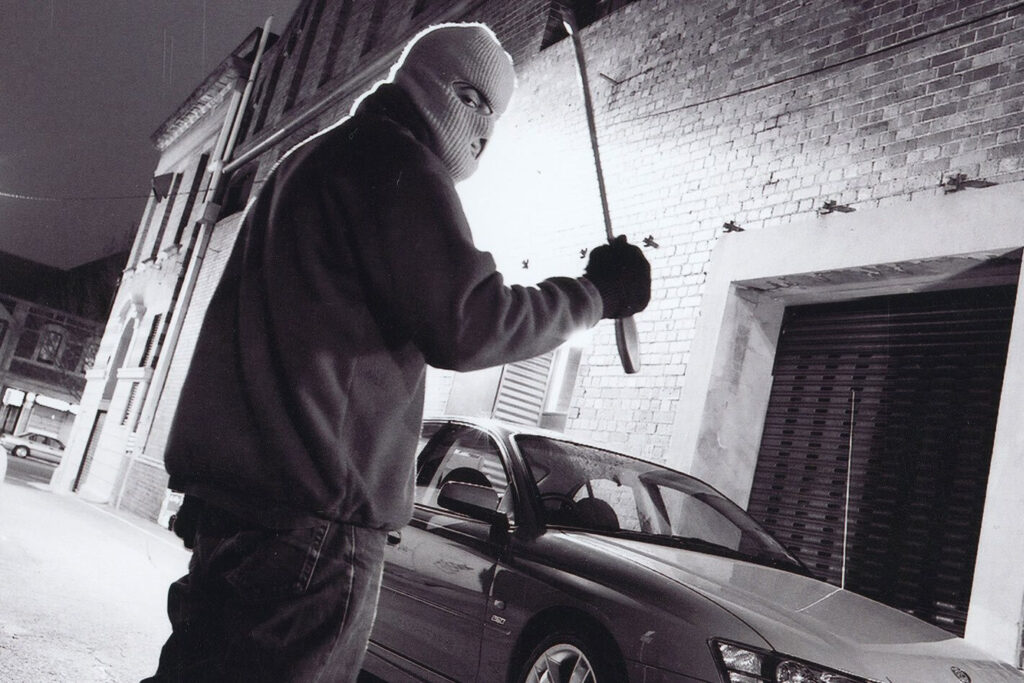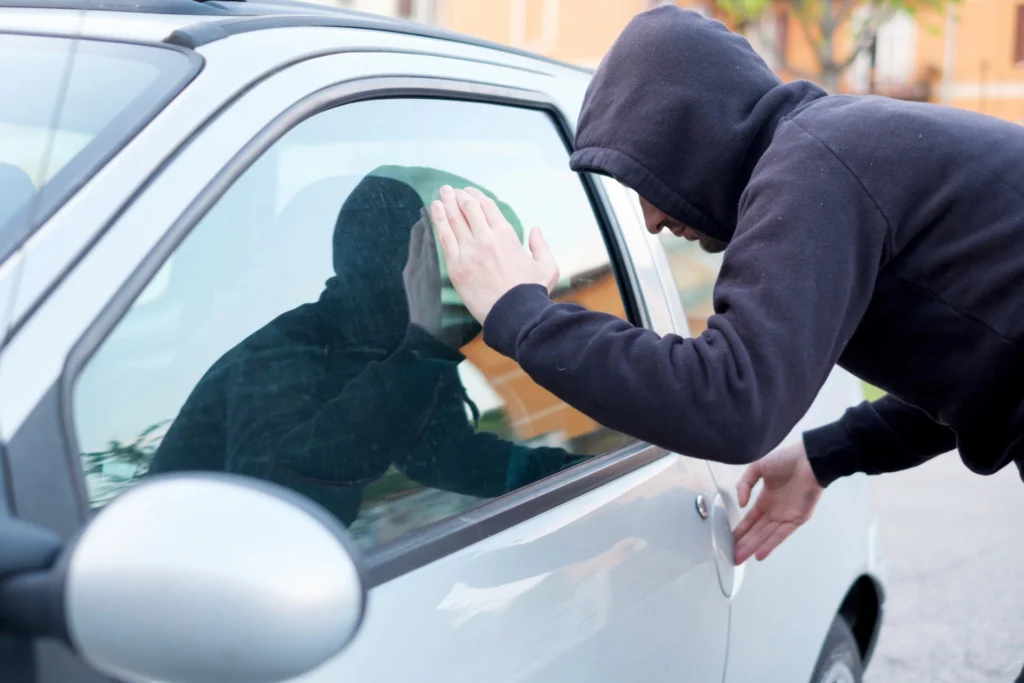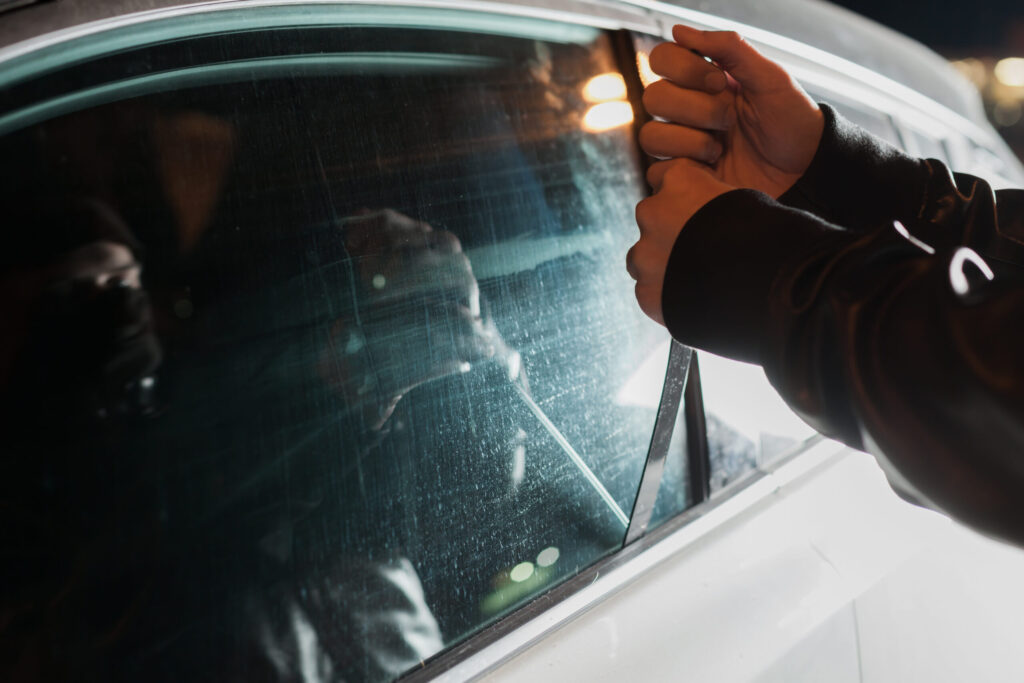Vandalism has been around since humans have held grudges or have been bored. But recently, it’s been on the rise. While you may know plenty of ideas to protect your home, protecting your vehicle can get a little more complicated.
Auto vandalism is intentional damage to a vehicle, not done by the owner. Vandalism includes everything from keyed paint, tampered with gas tanks, slashed tires, and broken windows or windshields.
In the event of auto vandalism, you don’t want to find yourself insufficiently covered by insurance. Unfortunately, things like coverage for slashed tires or keyed paint are usually in the back of our minds until it’s too late. Read on for tips on how to be proactive against auto vandalism and what to do if you end up a victim.
1. Park Off the Street Overnight
Leaving your car parked on the street at night provides an easy target for even casual vandals. Many of these crimes are crimes of opportunity. The more steps you place between them and the chance to vandalize, the less likely they will choose your vehicle.
Investing in additional security measures, such as driveway motion sensors or security cameras, can further deter potential vandals. Security technology today is relatively cheap and very user-friendly, offering peace of mind for protecting your property. Consider exploring reputable suppliers like Viking Fence for a range of security solutions to safeguard your home and belongings.
2. Park in Well-Lit Areas
The more visible your car is to you and other onlookers, the less likely a vandal will be bold enough to attack your vehicle. In addition, darkness obscures identities and security cameras are less likely to pick up events in the dark. If there are limited lights where you need to go, park near brightly lit stores or gas stations.
3. Avoid Parking in Unwatched Areas

Source: streetmachine.com.au
Guardianship is a term police use to describe the level of monitoring specific spaces provide. Choose a parking spot with high guardianship. Examples of high guardianship are entrances to buildings or within the coverage of security cameras. Vandalism happens when someone can easily access your vehicle without the threat of getting caught.
Long-term parking, unsecured auto shop parking lots, and apartment parking are all risky parking scenarios. Mass parking with easy access and limited monitoring is an open invitation to vandalism.
4. Check Local Crime Maps
Many online resources map out crime rates and types of crime in specific areas. If you plan to park in an unfamiliar area or are from out of town, check the crime map of that area. Remember, out-of-state license plates can make you a target. Try to park in areas with less crime, or try to park in a secure parking ramp.
5. Avoid Inflammatory Stickers or Decals
Don’t make yourself a target by using offensive bumper stickers. Vandalism can be very personal, and the more personality you include outside your car, the more at risk you are of making someone mad. If you choose to put decals, symbols, or words that identify you with certain groups you may experience retaliation and vandalism.
6. Lock Your Doors and Close Your Windows

Source: regalinsurance.com
As stated earlier, these crimes are often crimes of opportunity. A group of bored teens might walk down a street testing car doors and windows for easy targets. Vandalism can damage exteriors and interiors. Especially if you have divisive stickers on the outside of your vehicle, the perpetrators could easily maximize the damage by ruining your interior.
7. Hide Valuables or Grab-and-Go Items
Purses, sunglasses, cameras, and anything of value that could easily be grabbed could entice a burglar to smash your windows or pop your locks. It can be hard to differentiate between vandalism and theft, and either way you would rather avoid the hassle.
Leaving fashionable items or desirable tech in plain sight could make your vehicle a target.By not drawing attention to your belongings, you can decrease the temptation of someone damaging your vehicle to get inside.
8. Drive Mainstream Autos
There’s nothing quite like a flashy paint job, high-end maker, or exotic model to entice a person to key your car or tamper with your exterior. If avoiding vandalism is your goal, avoid exotic and showy cars. Plain and mainstream cars draw less attention. You don’t want to make yourself an easy target.
9. Shop for Autos with Anti-Theft Features
When buying a car, investigate which models have better anti-theft features built into the car (theft-proof ignition switches, chipped keys, vehicle tracking and disabling, etc.). Though these are intended to deter theft, they also make your vehicle more intimidating for other crimes.
10. Use Aftermarket Safety Tech

Source: carinsurent.com
There are several aftermarket safety features that you can invest in. You can place motion sensor alarms in your car and activate and deactivate it with a smartphone. There are 360-degree cameras that you can install in your vehicle that alert you to impact or tampering while the car is in park.
Safety devices such as the Club fastened on the steering wheel and flashing blue lights can be enough to deter casual vandalism.
Sadly, many crimes of vandalism are personal attacks perpetrated by someone known to the victim. Be careful how you treat people and conduct business to avoid these attacks.
Ultimately you may not prevent vandalism to your auto even if you are careful. Make sure you are well insured.
Auto Insurance and Vandalism
Most states require you to carry a mandatory minimum insurance policy on your vehicle. This policy covers liability to a certain amount in the event your car causes damage to a person or property. Unfortunately, while this is a starting point, this is often inadequate for real-life situations.
Minimum mandatory auto insurance will not cover vandalism claims. You need a comprehensive insurance policy to provide coverage for vandalism.
Check your policy today and make sure you understand what is covered and what is not. If vandalism is covered, your agent will walk you through the process of fixing your vehicle.
What typically happens with vandalism is that your insurance company will send someone to estimate the cost of damages, or they will give you a list of autobody shops they will accept estimates from. Then, once you meet your deductible, your insurance provider issues you a check to cover the repairs.
If your policy has a perk of “accident forgiveness” where they won’t raise your rates after the first accident, a vandalism claim may count toward that single forgivable event. Otherwise, beware, submitting a claim might increase your monthly premiums.
A simple chat with your agent should bring you up to speed on what your auto insurance covers regarding vandalism. However, don’t be afraid to shop around if you don’t get the answers you are looking for or cannot afford to add comprehensive coverage to your current policy.



